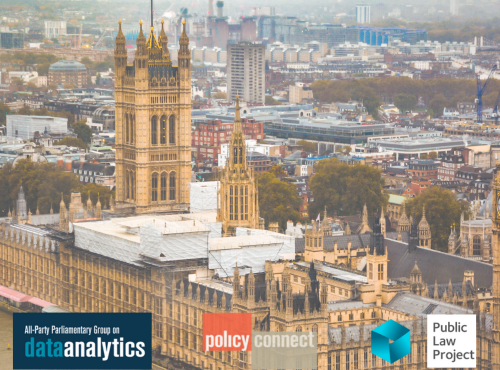The National Data Strategy - Getting the basics right
The past decade has seen an exponential rise in the amount of data in circulation and collection. Fuelled by an increasingly interconnected world and with growing demand from everything from data- driven marketing to crypto currencies, experts estimate that more data has been generated in the past decade than in the rest of human history – amount to 2.5 quintillion bytes a day.
The launch of the Government’s National Data Strategy in September 2020 was therefore long-awaited. Given the vast amounts of data used in the public, private and third sector, creating a successful government strategy has its challenges. As the increased use of data and digital technologies is transforming all facets of people’s lives, it is all the more important that this one reaches the right conclusions and outcomes.
In our response to the Strategy, we noted that successive governments have adopted approaches to data that have had real successes. We also highlighted various shortcomings, not least the point that “data is not consistently managed, used or shared in a way that facilitates informed decision-making or joint working across government and the wider public sector. Data remains undervalued and underexploited.”
The National Data Strategy must therefore be able to address these problems. A decade ago, the UK was a world-leader in digital and data policy for public services. The launch of the GOV.UK website as a hub for everything from official government announcements to passport applications was rightly heralded as a benchmark and a design classic. Since then, however, the country has fallen behind international partners. Although Estonia is rightly heralded as an exemplar for digital governance (there are only three transactions involving the government where an individual must appear in person, getting married, buying or selling real estate, and getting divorced), a fairer comparison should be made with more countries more equitable in size and scope to the UK. Germany, for example, recently introduced a major overall of its regulation of the digital sphere, whilst the French Government’s Covid-19 dashboard allowed individuals to access real-time, open-source data down to the level of individuals Commune. If the Government’s post-Brexit vision for “Global Britain” is to be realised, it must seek to be at the forefront of similar innovations.
Crucially, this means thinking beyond the simple provision of public services and instead consider the impact of data on wider society and its ethical implications too. Just as the creation of the world wide web revolutionised internet access in the mid-nineties, democratising and decentralising it, so too must the Strategy recognise how data is also transforming the public’s relationship with the state and each other.
Our response gave particular focus towards the growing impact of data-driven technologies in people’s lives and the importance of embedding ethics within their operation. In May 2019, Policy Connect and the APGDA launched Trust, Transparency and Tech. In the report, we noted that the foundations for a data strategy aimed at delivering better public services and private sector growth must start with creating and maintaining trust and developing public confidence in how data is collected, categorised, stored, and used. It is positive to see that the National Data Strategy pillars and missions need to put public confidence and trust central to its framework. However, the Strategy must go further to build trusted regulatory regimes (as noted in the German example above) as well as developing more secure and resilient infrastructure.
It is inevitable that the final iteration of the Strategy will not satisfy everyone. In such a vast and impossible to define area as “data”, it is inevitable that some will be dissatisfied. Yet, if the Strategy is to be successful, it must not shy away from a willingness to go against the grain, to innovate, and to be adaptive to future challenges.





